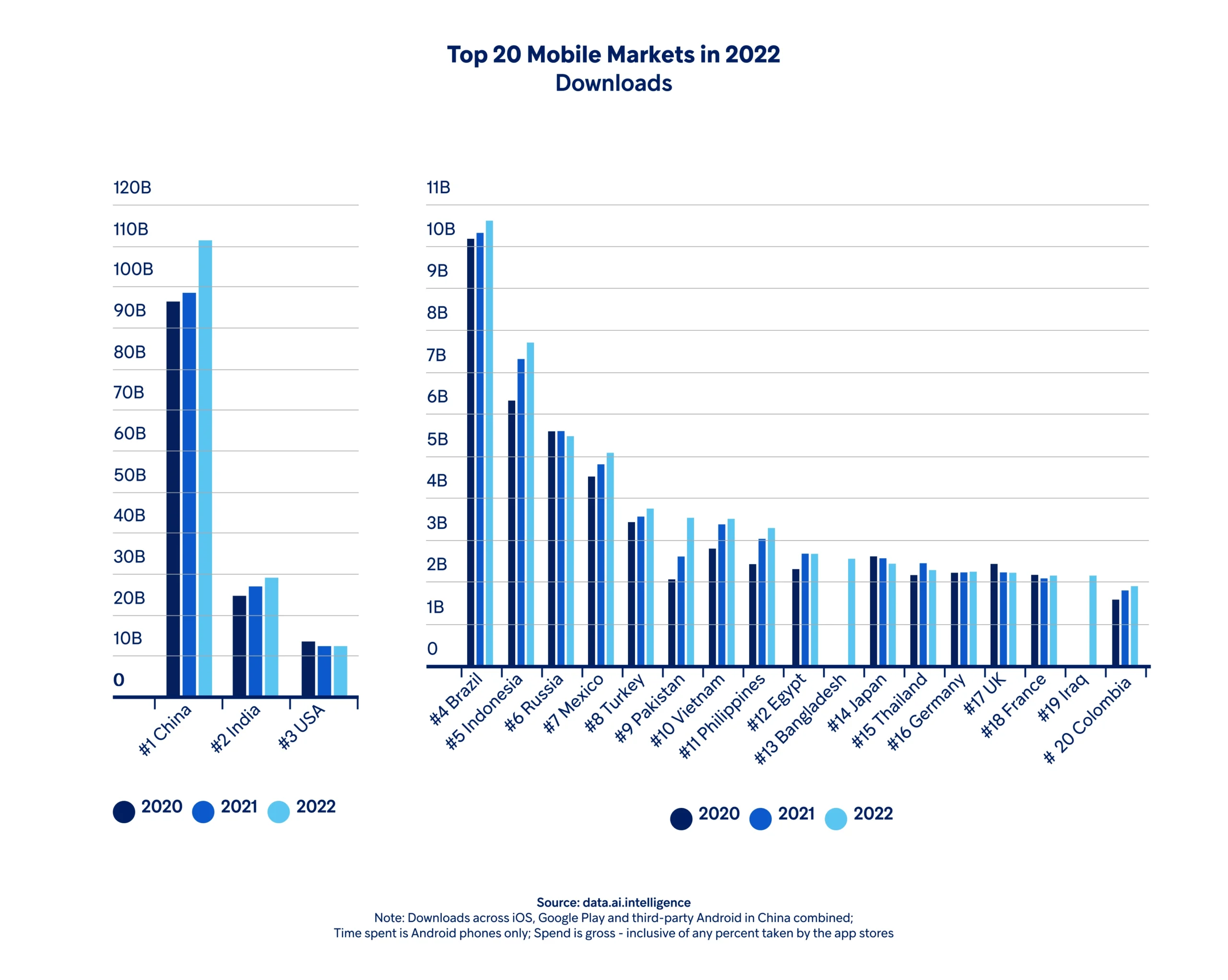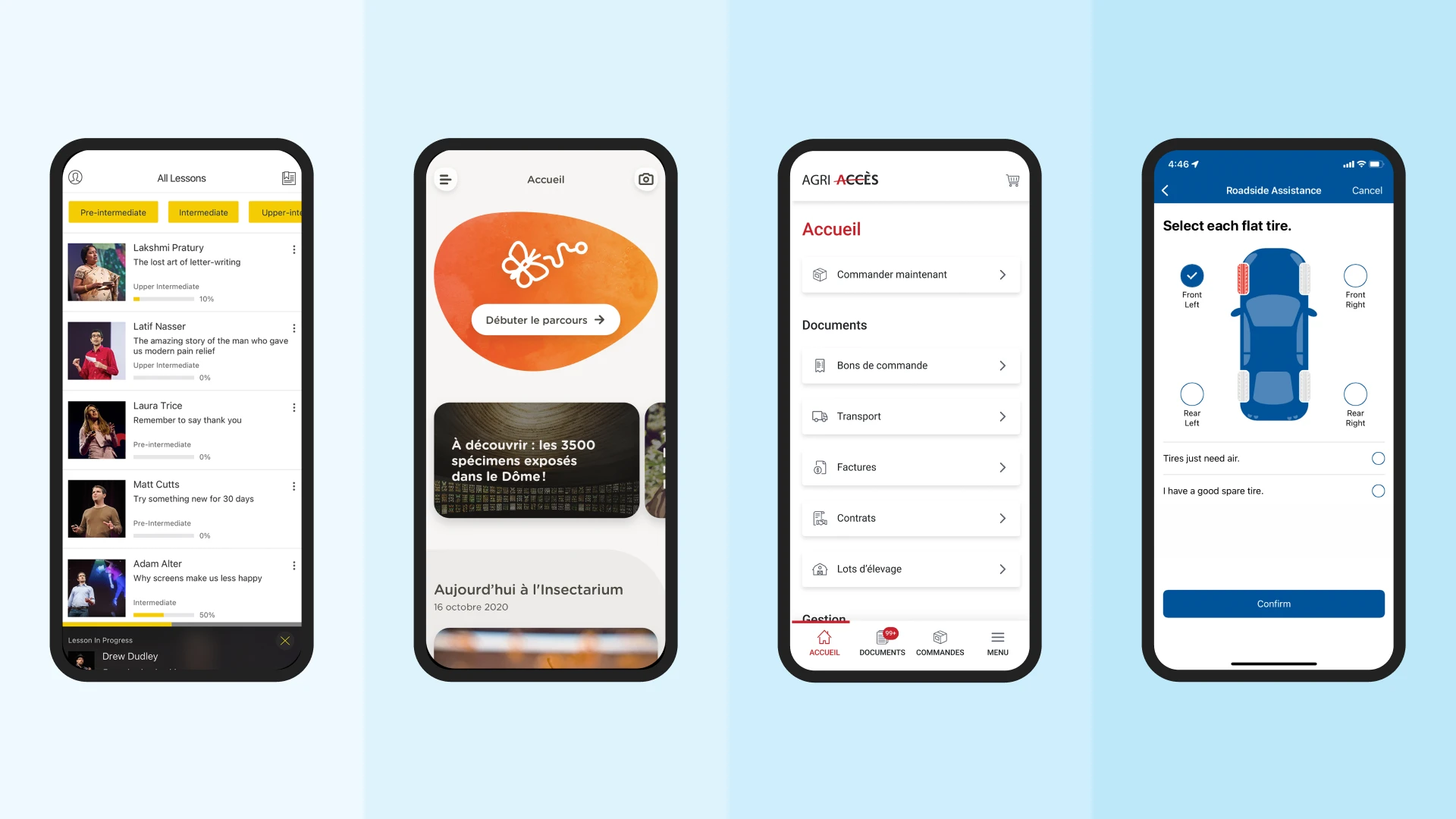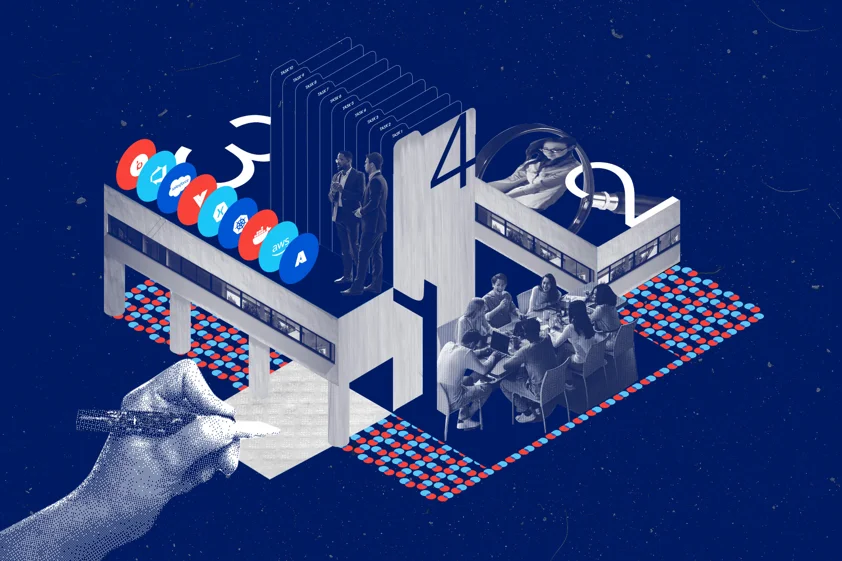Mobile apps shape the digital lives of your users. Discover the role a mobile app should play in your business right now with these 5 key factors to consider to get a clearer picture.
Where does the app market stand?
From morning to night, we use dozens of apps to perform actions of varying value: from simply checking our social media to managing our personal finances, smartphones and the apps that populate them are part of our daily lives.
If you look at the numbers, it goes without saying that apps are ubiquitous, as demonstrated by the data.ai report on mobile app usage in 2022:
- 255 billion new app downloads for the year,
- 485,000 new app downloads per minute,
- 5 hours spent daily per user,
- 4.1 trillion hours spent on mobile apps worldwide.
Obviously, these numbers are only expected to increase.
Interesting fact: Mobile web browsers only accounted for 8% of the average time spent on cell phones. Although the web is essential for your marketing and user acquisition funnel, apps attract attention and create significant engagement.
Here's why your business should have its own mobile app in 2023 based on these 5 key factors
1. Your Unique Value Proposition
Two questions to ask yourself: how do you want to stand out in your market? What are the benefits for your customers in choosing you?
A mobile app is essential if your value proposition emphasizes the following:
- The customer: The quality of the consumer experience is at the heart of your value proposition. You want them to be satisfied and have a pleasant journey to maximize loyalty. A mobile app makes your brand accessible to the customer and streamlines interactions and transactions.
- The quality of the product or service offered: You guarantee impeccable quality to your users, which usually justifies the price of your offer. This ensures maximum credibility. The closeness provided by the mobile app to the customer instills trust in the brand and its offerings.
- Innovation: If innovation is at the heart of your DNA, you probably already have a mobile app. You rely on this highly differentiating factor to be the market leader and gain maximum legitimacy. You understand the need to continuously enhance the experience with new fun or cutting-edge features to maintain user engagement.
Consider that your value proposition may depend 100% on the channel you choose. For example, think of Hopper, a flight and hotel booking platform whose positioning boils down to “Book Travel On Mobile.” Their differentiating factor is entirely based on their high-performance mobile app.
2. Your Target Audience
Mobile apps can and should be used by the entire population. There is little distinction in usage based on gender, location, age, or socio-professional category.
However, some groups are very sensitive to the presence of mobile apps. For them, the quality and existence of a mobile app is a fundamental criterion for choosing one company over another.
How can we ensure we reach the right users? Here are some things to keep in mind:
- By market: China, India, and the USA are at the top of the market in terms of app downloads in 2022 (source: https://www.data.ai/en/go/state-of-mobile-2023/). Not providing an app is therefore a significant mistake in these markets.
- By age group: People aged 45 to 54 spend about 1 hour and 15 minutes a day using mobile apps. That’s 27 minutes less than those aged 25 to 34. So even mobile users over 65 spend nearly an hour a day using mobile apps, especially since the pandemic.
- By gender identity: While second-hand shopping, photo editing, and telemedicine are as popular with men as with women, some industries are more gendered. For instance, sports, discussions, forums, and dating apps are more male-dominated, while e-commerce, meditation, relaxation, or grocery delivery are predominantly female in the US.
Given these principles, if you target a female American millennial market in the field of photography, the likelihood that your audience expects a mobile app is very high.

3. Type of Product or Service Offered
Not all companies offer the same goods, and all industries don’t have the same expectations. So it’s essential to consider what you offer.
Some offerings have high application potential…
- A service: Mobility, 24/7 availability, and quality align with what a mobile app can provide. See the example of CAA.
- A digital product (e.g., a website, subscription, or training platform): Offering a mobile app provides an omnichannel experience for your users. A mobile app allows them to fully enjoy your product. Check out the National Geographic Learning app.
- An experience (e.g., a spa, trip, or museum visit): Key app features can amplify the level of this experience. Geolocation, notifications, camera… The experience can be transcribed within an app and add invaluable value. Dive into the world of the Insectarium.
… while others should be analyzed on a case-by-case basis.
- A physical product: Here, it’s up to you to determine the evolution you want to bring to your product and its distribution network. It’s also crucial to distinguish a product for the general public (B2C) or for professional clients (B2B). If consumers expect a mobile app, especially for a loyalty program, in B2B, it’s not always done because it’s often more complex. However, some examples demonstrate the added value of a B2B mobile app, such as the success of Agri-Marché.

4. Your Current Challenges
Every day, you analyze your successes and areas for improvement in various reports and follow-ups that allow you to establish your goals, from your KPIs to your internal process issues.
Every case is different, and here are some real situations among our clients that confirmed their need to create a mobile application:
Customer Service and Satisfaction Issues: Whether for CAA, VCA, or Agri-Marché, these companies previously noted a bottleneck within customer service (too many calls for too few staff), leading to a decline in customer satisfaction. The solution was to create a self-service application to respond as quickly and efficiently as possible to consumers.
Loyalty Issues: A gas station operator needed to increase its rate of recurring customers to strengthen its revenues across all product categories in stores. As we know, retaining a customer is cheaper than continuously recruiting new ones. Thus, a loyalty application became essential.
Experience Issues: For some museums, such as the Insectarium, the desire to offer a quality experience is crucial. This is reflected in customer reviews and the time spent on site. The solution: create an ultra-immersive application, rich in content and features, to enhance the quality of the experience.
Mobility and Availability Issues: Present among many clients, this challenge is, in fact, a critical differentiation factor for users. It is inherently linked to your value proposition and is reflected in user feedback. From suicide prevention to investment management, users need access to certain resources and features everywhere and at all times. Thus, a mobile application meets this kind of need comprehensively.
Also Read: Guide: How to Measure the Success of Your Digital Solution in 2023
5. Your Goals for the Coming Years
Few companies have no digital transformation goals for their company in the coming years.
Yet, digital transformation is a very broad term that includes many possible projects, ranging from the overhaul of the internal digital ecosystem (ERP, CRM, etc.) to creating a unique and engaging user experience.
Among the other frequently mentioned business objectives, there is a desire for growth (example: increased revenues or market share), the development of new markets to target other territories, and also to reach new potential audiences. Essentially, people are looking for a way to stand out in an ultra-competitive and saturated market.
In this sense, developing a mobile application is almost evident when looking to the future.
Where are we heading in terms of applications?
David A. Hamel, Vice President of Strategy, CX, and Design sheds light on the subject: “Mobile application development has undergone several evolution cycles over the past few years. Several significant innovations improving experiences have emerged: biometric connection, haptic feedback, AR kit, lidar sensor; just to name a few. This year, for example, we note that Apple’s announcement of VisionPro falls within this line of innovation and will affect a particular type of application, especially in the field of individual virtual reality experiences and widgets. It goes without saying that the application experience is not at the end of its transformation, and every company benefits from entering this mobile universe as soon as possible.”
It is now time for you to weigh these five factors and make an informed decision about creating – or improving – your mobile application!






